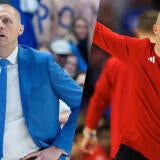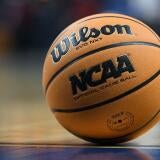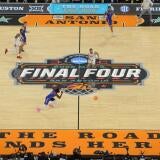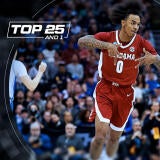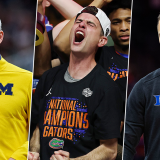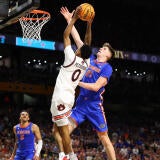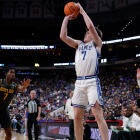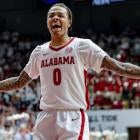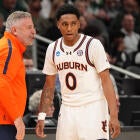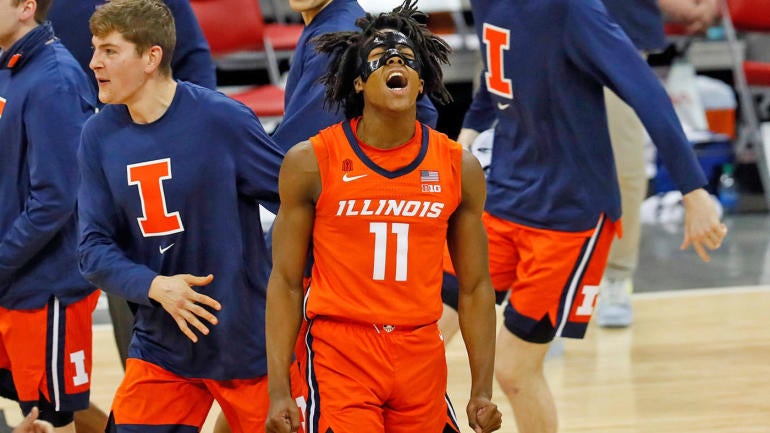
Selection Sunday has finally come and gone, and the 2021 NCAA Tournament bracket is in our hands. Now the question becomes how best to keep your bracket from taking a one-way flight into the trash can after watching your national champion lose to a No. 15-seed on the first afternoon of the Big Dance.
Allow me to introduce you to the Flagrantly Unscientific Natty Kalculator -- or F.U.N.K. -- the foolproof method which has never failed to identify the national champion (it's 2 for 2 in writing and 4 for 4 on TV).
After applying these six rules to the bracket -- almost every national champion fits into these categories -- we can say with near certainty who's got an actual shot to win in 2021. It's just math.
The field is set, now fill out your bracket! Pick against friends or play solo to compete for a college basketball dream trip. Get in the action today.
Rule 1: The cream has already risen to the top
Call this the No Fun Rule if you'd like, but there's no point in fighting with reality: Cinderella doesn't win national titles. At least not regularly enough for it to be worth predicting on your bracket. Since seeding began in the late 1970s, only four national champions have been seeded worse than five: No. 6 NC State in 1983, No. 8 Villanova in 1985, No. 6 Kansas in 1988 and No. 7 UConn in 2014. You'll also notice it's only happened once in the last 30 years. So, we're about to say goodbye to over 70% of the field because everyone seeded sixth or worse -- you're out!
Eliminated: All teams seeded sixth or worse (and all four potential replacement teams)
Rule 2: Act like you've been there before
Teams don't win it all in their first trip to the Final Four. It's only happened one time since the NCAA Tournament expanded to 64 teams in 1985. The exception, of course, is UConn, who love to torment me as a lifelong Villanova fan. In this case, it isn't the 2014 UConn team but the 1999 one that cut down the nets in its first-ever trip to the Final Four. So when you consider 34 of the last 35 champions have not accomplished that feat, it seems like a fairly solid success rate. That means it's time to say goodbye to anyone who hasn't been to a Final Four. Only three teams exit here, but one of them -- Alabama -- is going to be a trendy pick to win it all after sweeping the SEC regular season and tournament titles.
Eliminated: Alabama, Creighton and Tennessee
Rule 3: Defensive efficiency wins championships
Cliches become cliches for a reason, and defense is simply a more reliable resource than offense because, sometimes, you just don't make shots. Tempo is a thing, though, and it has too significant an impact on gross points allowed for that to be a reliable measure of team defense. So we turn to the one and only Ken Pomeroy and his adjusted defensive efficiency rankings. Dating back to the start of the KenPom efficiency data in 2001-02, every single national champion has finished in the top 20 in adjusted defensive efficiency. Because these rankings are not static and teams will move around a good bit in the tournament, I'm setting the threshold at a nice, round Rothstein 45. To the five teams we just lost, well, you shoulda made some stops.
Eliminated: Florida State, Iowa, Ohio State, Villanova and West Virginia
Rule 4: One Shining Moment Prospect
Ultimately, it comes down to the players, and all but four national champions since 1995 have seen a player selected in the first round of that year's NBA Draft. And while four exceptions in the last 25 might seem a tad high for a "rule," when you look at the exceptions, you'll agree they didn't suffer from a lack of pros.
- 2016 Villanova: Josh Hart and Mikal Bridges were future first rounders, while Jalen Brunson and Ryan Arcidiacono are also enjoying successful NBA careers (Donte DiVincenzo was on the roster but played only eight games).
- 2010 Duke: Future first rounders Nolan Smith, Mason Plumlee and Miles Plumlee all returned to school as did Final Four Most Outstanding Player Kyle Singler.
- 2006 Florida: All they had was Al Horford, Joakim Noah, Corey Brewer and Taurean Green all deciding to return and repeat as national champions (the last team to do that). Horford, Noah and Brewer were all first-rounders in 2007.
- 1997 Arizona: Mike Bibby, Jason Terry and Michael Dickerson all returned before going in the first round in one of the following two drafts.
The last champion that didn't have either a first round pick that year or multiple future first rounders, 1994 Arkansas, had a solid pro in Corliss Williamson, but he returned to school. It's a bit early for mock NBA Drafts to be informative, so we'll use the CBS Sports prospect rankings and open it up to the top 40 prospects. That's bad news either way for top seed Michigan, whose highest-ranked prospect is No. 47 Isaiah Livers.
Eliminated: Colorado, Houston, Michigan, Purdue and Virginia
Rule 5: The champs are here!
Next on the chopping block is everyone who didn't win either a share of their regular season conference title or the conference tournament title. Why? Because in the last 30 tournaments, only three teams have won the national title without also winning a league title. Those include 1997 Arizona (no conference tournament), 2014 UConn (an outlier in almost every sense) and 2015 Duke (35-4 but finished a game back of Virginia in a competitive ACC and lost to top 10 Notre Dame). In other words, champions win championships. Also-rans are out.
Eliminated: Arkansas, Kansas and Oklahoma State
If you've been playing along, you know we're down to just four teams, and they conveniently come from four different regions -- No. 1 Gonzaga (West), No. 1 Baylor (South), No. 1 Illinois (Midwest) and No. 3 Texas (East). I could stop here, call it a day and feel great about this FUNK-y Four. But there's still one more rule ...
Rule 6: Blue provides the clue
Granted, this rule has gotten me openly mocked on CBS Sports Network every time this system has been presented on that platform. Only one of the last 16 national champions didn't have a shade of blue somewhere among its official colors, and that was such an aberration that red-wearing 2013 Louisville's title isn't even officially recognized anymore (but welcome back to the Big Dance, Rick Pitino). "Flagrantly Unscientific" was right there in the title, and this rule stays until someone disproves it. Come at me, Big 12 hive.
Eliminated: Baylor and Texas
There you have it, the only teams who can actually win the 2021 national championship are Gonzaga and Illinois. We'll find out on April 5 whether it's the Bulldogs or Fighting Illini bringing home their first national title in program history.
For what it's worth: Big Ten teams have lost seven straight national championship appearances since Michigan State cut down the nets in 2000.
Get every pick, every play, every upset and fill out your bracket with our help! Visit SportsLine now to see which teams will make and break your bracket and who will cut down the nets, all from the model that beat nearly 90% of brackets last tournament, one year after finishing in the top 5%!
![[object Object] Logo](https://sportshub.cbsistatic.com/i/2020/04/22/e9ceb731-8b3f-4c60-98fe-090ab66a2997/screen-shot-2020-04-22-at-11-04-56-am.png)

